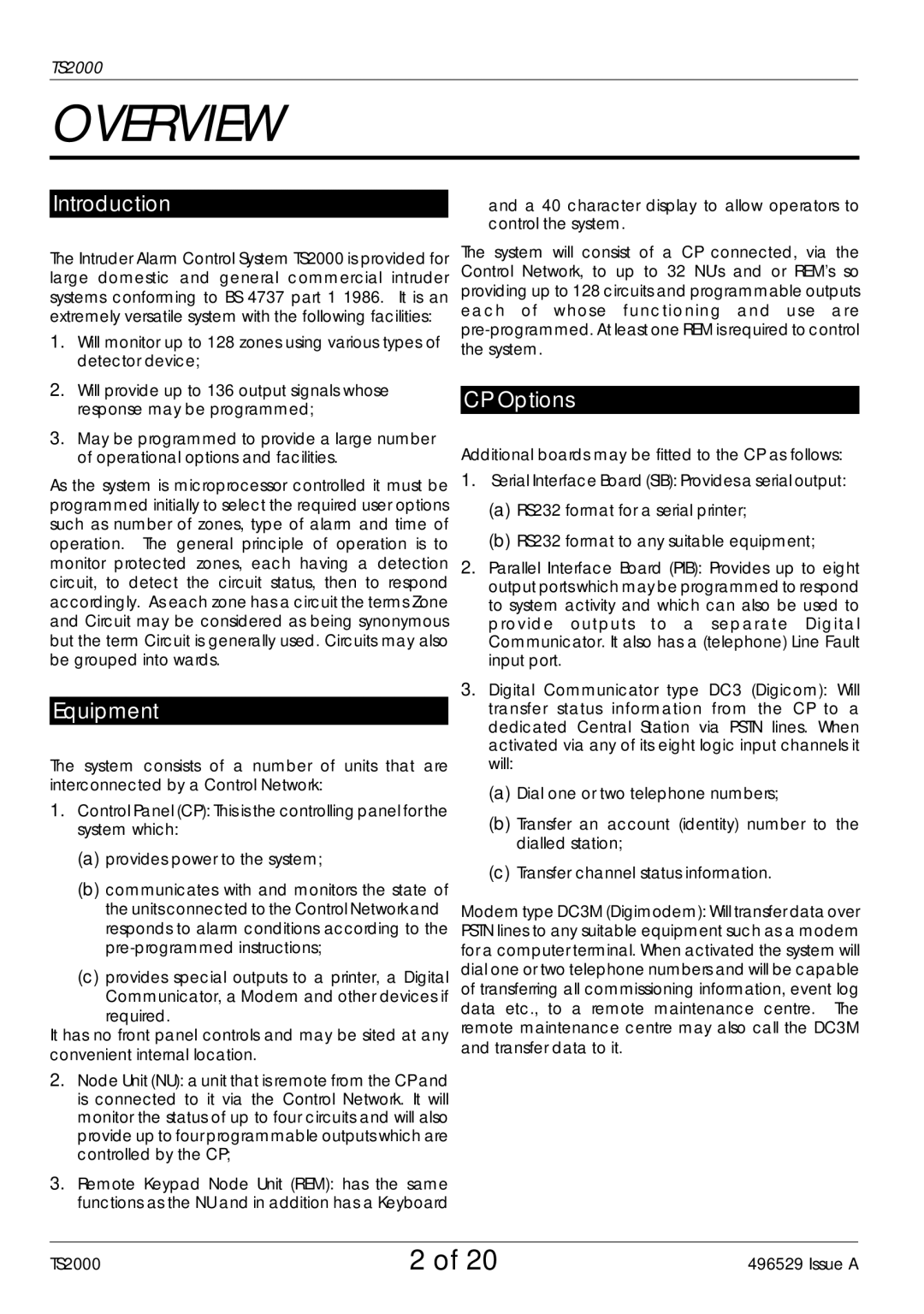TS2000 specifications
The Security Centres TS2000 is a cutting-edge security system designed to provide advanced monitoring and protection for various applications. Its comprehensive features, technologies, and characteristics make it a go-to solution for businesses and organizations seeking robust security measures.One of the primary features of the TS2000 is its modular design, allowing for easy customization to suit the specific needs of different environments. Users can select the appropriate modules based on their security requirements, ensuring that all critical areas are adequately protected. This flexibility also enables users to expand their systems over time as their security needs evolve.
The TS2000 incorporates state-of-the-art video surveillance technology, supporting high-definition cameras that deliver crystal-clear images and video feeds. With its advanced video analytics capabilities, the system can detect unusual behaviors and alert security personnel in real-time. This proactive monitoring significantly enhances security response times and ensures that potential threats are identified before they escalate.
Furthermore, the TS2000 is equipped with robust access control mechanisms, allowing organizations to manage who can enter specific areas. This feature is vital in high-security environments, where restricted access is necessary. The system supports various authentication methods, including key cards, biometrics, and mobile credentials, ensuring a seamless and secure entry process.
Integration is another significant characteristic of the TS2000. The system can easily connect with other security devices, such as alarm systems, fire detectors, and environmental sensors. This interconnected approach creates a centralized security footprint, offering users a comprehensive overview of their security landscape in a single interface.
Reliability is one of the hallmarks of the TS2000. Built with durability in mind, the system is designed to operate continuously without downtime, ensuring consistent protection. Additionally, the TS2000 utilizes advanced encryption protocols to safeguard transmitted data, ensuring the integrity and confidentiality of sensitive information.
User-friendly interfaces are essential for effective security management, and the TS2000 excels in this area. Its intuitive software allows security personnel to monitor, manage, and respond to incidents efficiently. Whether accessed via desktop or mobile devices, the system provides real-time alerts and notifications, empowering users to act quickly.
In conclusion, the Security Centres TS2000 stands out as an advanced, versatile, and reliable security solution suitable for various applications. Its modular design, advanced video surveillance, robust access control, and seamless integration capabilities position it as a leader in the security market. With features that enhance user experience and operational efficiency, the TS2000 is a proactive defense system that ensures the safety and security of any environment.

